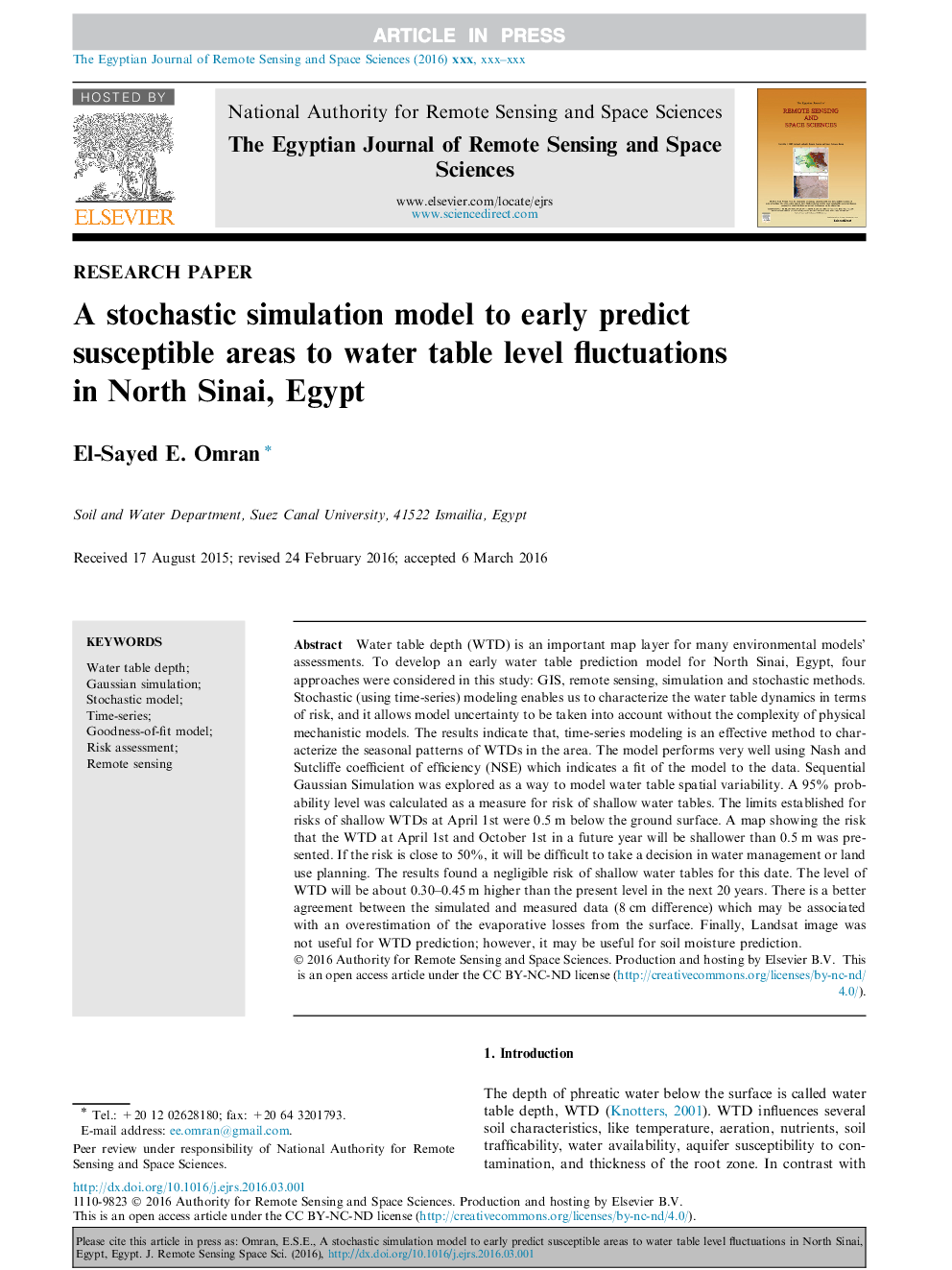| Article ID | Journal | Published Year | Pages | File Type |
|---|---|---|---|---|
| 5780205 | The Egyptian Journal of Remote Sensing and Space Science | 2016 | 23 Pages |
Abstract
Water table depth (WTD) is an important map layer for many environmental models' assessments. To develop an early water table prediction model for North Sinai, Egypt, four approaches were considered in this study: GIS, remote sensing, simulation and stochastic methods. Stochastic (using time-series) modeling enables us to characterize the water table dynamics in terms of risk, and it allows model uncertainty to be taken into account without the complexity of physical mechanistic models. The results indicate that, time-series modeling is an effective method to characterize the seasonal patterns of WTDs in the area. The model performs very well using Nash and Sutcliffe coefficient of efficiency (NSE) which indicates a fit of the model to the data. Sequential Gaussian Simulation was explored as a way to model water table spatial variability. A 95% probability level was calculated as a measure for risk of shallow water tables. The limits established for risks of shallow WTDs at April 1st were 0.5Â m below the ground surface. A map showing the risk that the WTD at April 1st and October 1st in a future year will be shallower than 0.5Â m was presented. If the risk is close to 50%, it will be difficult to take a decision in water management or land use planning. The results found a negligible risk of shallow water tables for this date. The level of WTD will be about 0.30-0.45Â m higher than the present level in the next 20Â years. There is a better agreement between the simulated and measured data (8Â cm difference) which may be associated with an overestimation of the evaporative losses from the surface. Finally, Landsat image was not useful for WTD prediction; however, it may be useful for soil moisture prediction.
Related Topics
Physical Sciences and Engineering
Earth and Planetary Sciences
Earth and Planetary Sciences (General)
Authors
El-Sayed E. Omran,
